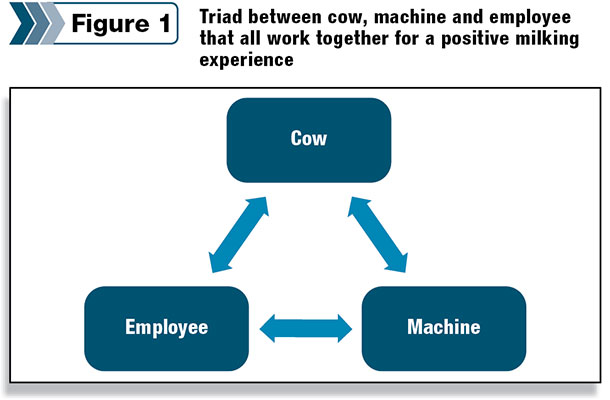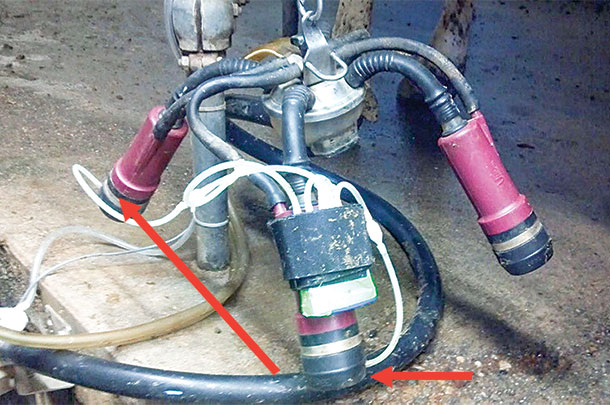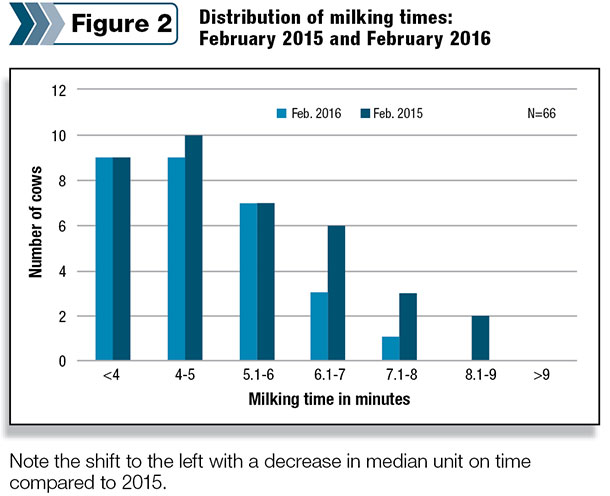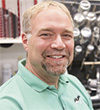Successful milking involves multiple parties. A triad of machine, cow and employee has to be in synch for efficient milking to occur.
Proper preparation of udders and teats before milking improves milk quality by ensuring good hygiene, detecting cows with clinical mastitis and harvesting milk efficiently. This last point, efficiency of milking, is measured by dairy producers using various means.
 Examples of measurements include cows milked per hour, milk produced per hour, cows milked and milk produced per labor hour. Productivity of a dairy operation increases when milking is done as efficiently as possible – as long as we don’t sacrifice milk quality and harvest.
Examples of measurements include cows milked per hour, milk produced per hour, cows milked and milk produced per labor hour. Productivity of a dairy operation increases when milking is done as efficiently as possible – as long as we don’t sacrifice milk quality and harvest.
Additionally, cow health improves when the time standing in holding pens and parlors, or having units attached, decreases. Given the effort spent on most dairies to ensure proper milking protocols, how do we know if they are being done correctly? Let the cows answer this question; they know best.
VaDia units (Vacuum Diagnostic, BioControl NA) digitally record vacuum inside the mouthpiece chamber of the liner (near the teat) and cluster, letting the cows tell us if they’re ready to milk or if they’re milked too long (overmilked). These units don’t measure milk flow directly, but a simple way to interpret the results relative to milk flow is:
High milk flow = Low vacuum in the liner
Low milk flow = High vacuum in the liner
The units can measure vacuum levels at four different places on the cluster simultaneously. In the photo, two tubes were placed in the mouthpiece of a front and rear liner (near the teat ends: red arrows). Additional tubes were placed near the cluster and in a short pulsation tube.

With the use of multiple units, digital recordings of vacuum are attained from each individual cow milked in a stall where a unit is attached. This generates a distribution of milking events from numerous cows in a relatively short amount of time. This information can be used to improve milking procedures and enhance the milking experience of the cows.
For example, after observation of protocols in the parlor, Farm A was found to have variable lag times between teat stimulation and unit attachment and inadequate teat stimulation. The unit’s analysis supported this observation by recording 78 percent of cows overmilked by more than 30 seconds.
One year later, after an intensive employee education program, the variability in milking protocols decreased as did the percentage of cows being overmilked, from 78 percent to 17 percent. This resulted in a decrease in the average unit-on time from 5 minutes 28 seconds to 4 minutes 31 seconds.

The analysis allows a unique opportunity to capture what is occurring in a cow’s world during a milking. We are able to identify multiple opportunities that not only include the cows but targets for employee education as well.
By letting the cow have a vote in the parlor procedures through this analysis, we can address all aspects of the milking triad – the machines, people and, most importantly, the cow. PD
More information on “Letting the Cows Score the Milking Protocol” and information on quality milk can be found online (Quality Milk Alliance).
Rhyannon Moore is a graduate assistant with Michigan State University’s College of Veterinary Medicine.
PHOTO: Courtesy photo.

-
Ron Erskine
- DVM, Ph.D., Professor
- Michigan State University






